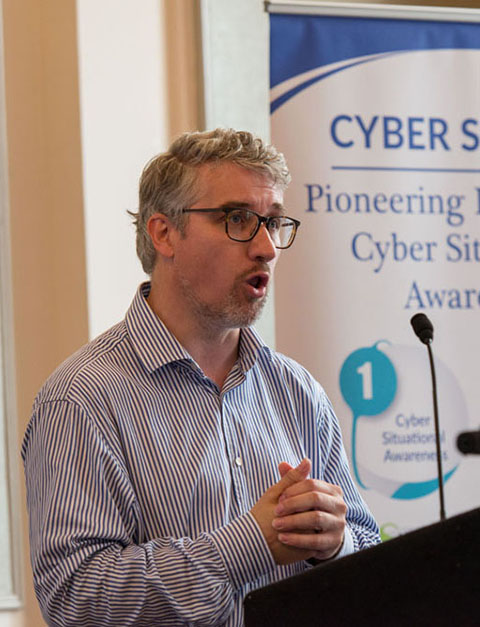
Call for Papers
IEEE is the Technical Co-Sponsor (TCS) of the International Conference on Cyber Situational Awareness, Data Analytics and Assessment (CyberSA 2017), an international refereed conference dedicated to the advancement of the principles, methods and applications of situation awareness on Cyber Systems, Business Information Systems (BIS), Computer Network Defence (CND), Critical National Infrastructures (CNI), Cyber Physical Systems (CPS) and Internet of Things (IoTs).
The aim of the CyberSA 2017 is to encourage participation and promotion of collaborative scientific, industrial and academic inter-workings among individual researchers, practitioners, members of existing associations, academia, standardisation bodies, and including government departments and agencies. The purpose is to build bridges between academia and industry, and to encourage interplay of different cultures
Submission Deadline
Due to numerous requests, the deadline for all paper submissions, that is, both full papers and extended abstracts for Poster, WIP, PoC, Research Idea and PhD Seminar presentations has now been extended to 28th February 2017.
All Industry track, Work in Progress track, Research Ideas track and PhD Seminar track will be published in the conference proceedings. Interested participants, please submit your proposal using the online submission system hosted by Easychair Conference Portal.
Topics of Interest
- Situation Awareness in Software Defined Networks
- Security Monitoring, Scale of Things and Limits to Monitoring
- Block Chain Technology in Security
- IoT Detection and Software Driven Applications Security
- Situation Awareness in Mobile Computing
- Standardisation of Cyber Situation Awareness
- Search, Triage, Examination and Forensics in Cloud Computing
- Cyber SA in Chaotic Computing
- Cyber SA in Large Scale IDS Deployments
- Assessment models and methodologies for Cyber SA
- Cyber Situation Awareness Evaluation Recommendation
- Cyber SA Maturity Models and Frameworks
- Cyber SA for Social Networks
- Social Network Interaction and Intelligence
- Web Analytics & Security Incident Response
- Organised and collaborative Maps and Networks
- Cyber Behavioural Analytics and Profiling
- Collaborative Situation Awareness for Decision Making
- Situation Assessment & Decision Making
- Defense Strategy for the Enhancement of Situation Awareness
- Situation Assessment, Resolution and Decision Loop
- Individual vs. Team SA
- Group and Team SA
- Trust, Privacy and Anonymity Issues
- Digital Forensic Information Analysis
- Enterprise Information Security Policies, Standards and Procedures
- Risks posed by Wireless Networks, including through the use of Mobile Computing, BYOD, Wearable in CND environment
- Fuzzy Logic
- Rough Set
- Artificial Neural Networks
- Artificial Intelligence
- Genetic Algorithm
- Evidence Theory (DST)
- Bayesian Networks & Set Theory
- Big Data Analytics
- Game Theory
- Graph Theory
- Cyber Attack Scenarios
- Situation-Aware and Context-Aware Network Applications
- CERTs and CSIRTs
- Security Event and Information Management
- Application Security, Audits and Penetration Testing
- Workload
- Perception
- Stress
- Knowledge
- Training and Expertise
- Risk Assessment and Decision Making
- Forecasting and Prediction
- Operator SA & Team SA
- Information Security
- Cyber Security
- Database Security
- Application Security
- Law Enforcement and Surveillance
- Border Protection and Controls
- Cyber Warfare and Counter Terrorism
- Military Doctrinal in Situation Awareness
- C4ISR (Command, Control, Communications, Computers, Intelligence, Surveillance and Reconnaissance)
- Computer Network Operations
- Computer Network Defense
- Mission Awareness, Command and Control
- Attack Graphs
- Advanced Security Incident Analysis
- Sensor Correlation and Cross-Correlation
- Implementing Situation Awareness Systems
- Information Security Metrics and Measurements
- Proactive Defense Strategies
- Instance-Based Learning
- Adaptive Neural Logic
- Human-Assisted Decision Control
- Human in the Loop
- Automated Self-Responder
- Tools for Metric Optimisation
- Visualisation and Digital Analytics
- Data Mining
- Filtration, Selection, and Risk-Based Prioritisation
- Metrics for Evaluation and Assessment
- Usefulness of Multisensor Data Fusion
- Information Data Fusion
- Sensor Fusion for Security Incident Analysis
- Security Incident Analysis
- Data Association & Correlation
- Security Information Visualisation
- Data Analytics
- Security Monitoring
- Situation Awareness in C4ISR
- Situation Awareness in Cyber Command and Control Centres
- Situation Awareness in Intrusion Defense
- Situation Awareness in Cyber Physical Systems (CPS)
- Situation Awareness for Internet of Things (IoTs), Enterprise Internet of Things (EIoTs)
- Open Source Applications
- Functional Requirements for Situation-aware services
- Non-Functional Requirements for Situation-aware Services and solutions
- Interface Design
- Interoperability
- Dynamism
- Complexity
- Performance
- Automation
- Realtime Processing
- Research and development in Situation Awareness
- Simulation and Testbeds in Cyber Situation Awareness
- Experimentation & Instrumentation
- Modelling
- Knowledge-base
- Theoretical Underpinnings in Situation Awareness
- Team and Group SA
- Cyber Situation Awareness Methods, Training and Education
Speakers

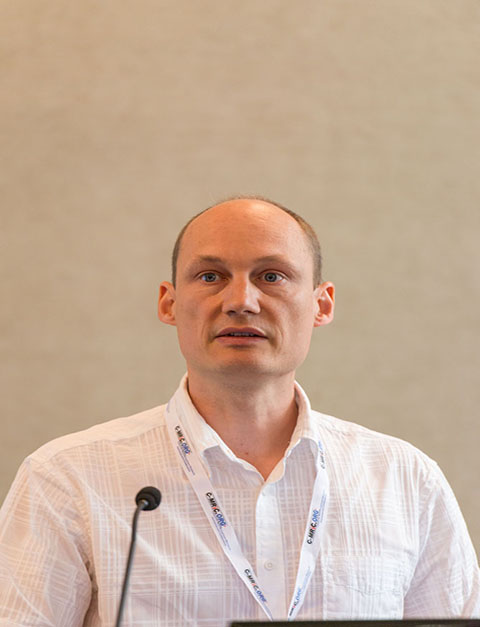
Dr. Eckhard Pfluegel
Science, Engineering & Computing, Kingston University, London, UK
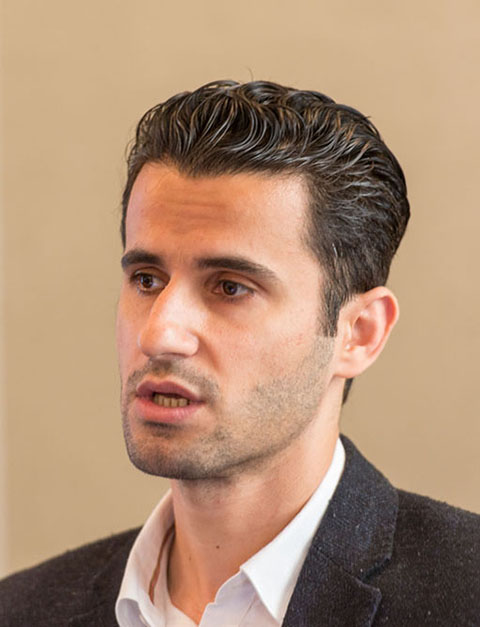
Dr Mahmoud Hashem Eiza
School of Physical Sciences and Computing, University of Central Lancashire, Preston, UK

Professor Kevin Curran
Computer Science, Ulster University, Northern Ireland, UK
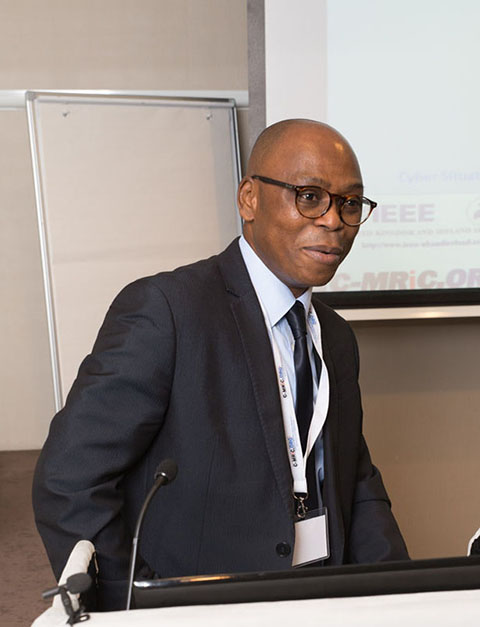
Dr. Cyril Onwubiko
Cyber Security Intelligence, Research Series Limited, London, UK
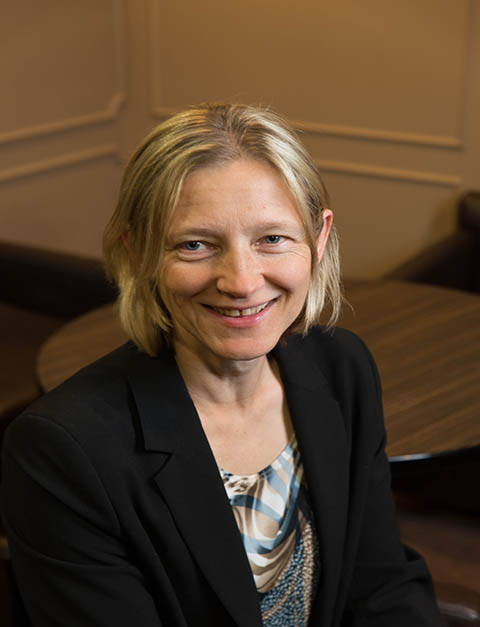
Dr. Janne Hagen
Norwegian Water Resources and Energy Directorate (NVE), Norway
Important Dates
- Industry (Proof of Concept / Pilot) Submission – January 14, 2017 extended to February 28, 2017
Extended Abstract (Work in Progress) – January 14, 2017 extended to February 28, 2017
PhD Seminar Submissions – January 14, 2017 extended to February 28, 2017
Research Ideas – January 14, 2017 extended to February 28, 2017
Poster/Demo Submissions – January 14, 2017 extended to February 28, 2017
Special Track Submissions – January 14, 2017 extended to February 28, 2017
Workshops and Tutorials Submission – January 14, 2017 extended to February 28, 2017
Full Paper Submissions – January 14, 2017 extended to February 28, 2017
Notification of Full Paper/Abstract / Special Track Acceptance/Rejection – March 24, 2017 extended to March 31, 2017
Camera Ready Paper Due – April 8, 2017 extended to April 14, 2017
Participants Registration – March 20 – May 25, 2017
Conference Date – 19 & 20 June 2017
Location
London
United Kingdom
Programme Committee
- Cyril Onwubiko – Centre for Multidisciplinary Research, Innovation and Collaboration, UK
- Thomas Owens – Brunel University, London, UK
- Janne Merete Hagen – Norwegian Defence Research Establishment, Norway
- Nick Savage – University of Portsmouth, UK
- Stacy J. Prowell – U.S. Department for Energy (DOE-OE) Cybersecurity for Energy, USA
- Eckhard Pfluegel – Faculty of Science, Engineering and Computing, Kingston University, UK
- Uri Blumenthal – MIT Lincoln Laboratory, MIT, USA
- Frederick Wamala – Security Architecture & Cyber Security, IBM, UK
- Andrew Lenaghan – Oxford University, UK
- Xavier Bellekens – University of Abertay, Scotland, UK
- Gareth Niblett – BCS Information Security Specialist Group (ISSG), UK
- Daniel Zeng – University of Arizona, USA
- Donna O’Shea – Nimbus Centre, Cork Institute of Technology, Ireland
- Sotiris Ioannidis – the Institute of Computer Science, Foundation for Research and Technology (FORTH), Greece
- Phil Legg – University of the West of England, UK
- Kevin Curran – Faculty of Computing and Engineering, Ulster University, Northern Ireland, UK
- Xavier Bellekens – University of Abertay, Scotland, UK
- Cyril Onwubiko – Centre for Multidisciplinary Research, Innovation and Collaboration, UK
- Mansour Alsaleh – Research Fellow at MIT
- Mahmoud Hashem Eiza – Physical Sciences and Computing, University of Central Lancashire, Preston, UK
- Roman Graf – Austrian Institute of Technology (AIT), Austria
- Andrea Cullen – Director of Cyber Security Interdisciplinary Centre, University of Bradford, UK
- Frederick Wamala – Security Architecture & Cyber Security, IBM, UK
- Lynsay Shepherd – Abertay University, Scotland, UK
- Marco Ivan Ramirez Sosa Moran – Faculty of Science and Technology, University of Westminster, London, UK
- Lai Bun Lok – IEEE UK & Ireland, IEEE
- Matthew Gream – IEEE UK & Ireland, IEEE
- Richard Hill – Department of Computing and Mathematics, University of Derby, Derby, UK
- Fatih Kurugollu – Cyber Security, University of Derby, Derby, UK
- Amin Hosseinian-Far – Faculty of Arts, Environment & Technology, Leeds Beckett University, Leeds, UK
- Kevin Curran – Faculty of Computing and Engineering, Ulster University, Northern Ireland, UK
- Matija Stevanovic – Department of Electronic Systems, Aalborg University, Denmark
- Donna O’Shea – Nimbus Centre, Cork Institute of Technology, Ireland
- Pooneh Bagheri Zadeh – School of Computing, Creative Technologies & Engineering, Leeds Beckett University, Leeds, UK
- Peter Komisarczuk – Royal Holloway, University of London, London, UK
- Mona Ghassemian – IEEE UK and Ireland, London, UK
- Eliana Stavrou – Computing Department, UCLan Cyprus, Larnaca, Cyprus
- Reza Montasari – Computing and Mathematics, University of Derby, Derby, UK
- Pierre Parrend – ECAM Strasbourg-Europe, France
- Abdullahi Arabo – University of the West of England (UWE), Bristol, UK
- Veena Desai – Gogte Institute of Technology, Belgaum, India
- Azah Norman – University of Malaya, Kuala Lumpur, Malaysia
- Theo Dimitrakos – Security Futures Practice, BT Research & Technology, UK
- Gerardo I. Simari – Universidad Nacional del Sur in Bahia Blanca and CONICET, Argentina
- Uwe Glässer – School of Computing Science, Simon Fraser University, Canada
- Sen Soori – VSB-The Technical University of Ostrava, The Czech Republic
- Liam Meany – School of Electronic Engineering, Dublin City University, Ireland
- Stacy J. Prowell – U.S. Department for Energy (DOE-OE) Cybersecurity for Energy, USA
- Anthony Davies – Life Member, IEEE UK & Republic of Ireland, IEEE
- Thomas Owens – Brunel University, London, UK
- Jens Myrup Pedersen – University of Aalborg, Denmark
- Reza Tadayoni – University of Aalborg, Denmark
- Andrew Lenaghan – Oxford University, UK
- Subrata Acharya – Towson University, USA
- Marios Anagnostopoulos – University of the Aegean, Greeceb
- Yi Luo – Department of Systems and Industrial Engineering, University of Arizona, Tucson, USA
- Erik Blasch – Fusion Evaluation & Air Force Research Laboratory, USA
- Genshe Chen – Fusion, USA
- Wei Yu – Towson University, USA
- Uri Blumenthal – MIT Lincoln Laboratory, MIT, USA
- Ciza Thomas – College of Engineering, India
- Stefanos Gritzalis – University of the Aegean, Greece
- Bechara Al Bouna – Science University, Lebenanon
- Janne Merete Hagen – Norwegian Defence Research Establishment, Norway
- Varun Dutt – Indian Institute of Technology Mandi, India
- Cleotilde Gonzalez – Carnegie Mellon University, USA
- Khidir M. Ali – Jubail University College, Kingdom of Saudi Arabia
- Xinyu Yang – Xi’an Jiaotong University, China
- Jie Lin – Xi’an Jiaotong University, China
- Georgios Kambourakis – University of the Aegean, Greece
- Elisavet Konstantinou – University of the Aegean, Greece
- Jeffrey Voas – National Institute of Standards and Technology (NIST), Gaithersburg, USA
- Kirankumar S. Akate – Government Institute of Forensic Science, Aurangabad, India
- Manish Gupta – State University of New York, Buffalo, NY, USA
- Yuan Gu – Cloakware Advanced Research Center, Irdeto, China
- Kristina Soukupova – Aerospace & Defense Practice, I3CAS, UK
- Panagiotis Trimintzios – Cyber Crisis Cooperation & Exercises Team Operational Security, ENISA, Europe
- Phil Legg – University of the West of England, UK
- Nilay Mistry – Gujarat Forensic Sciences University, India
- Laribi Boualem – University of Djillali Bounaama, Algeria
- Ashish Choudhari – Southern Illinois University, Carbondale, USA
- Moi Hoon Yap – Manchester Metropolitan University, Manchester, UK
- Xuan Zhao – Cylance, California, USA
- Huiyu Zhou – Queen’s University Belfast, Belfast, UK
- Vida Ghanaei – KCS Group, London, UK
- Keem Siah Yap – Universiti Tenaga Nasional, Malaysia
- Paolo Falcarin – School of Architecture Computing and Engineering (ACE), University of East London, London, UK
- Petra Leimich – Edinburgh Napier University, Edinburgh, Scotland, UK
- Shahid Shabbir – School of Computing and Digital Technology, Birmingham City University, UK
Conference Programme
- Antti Evesti, Teemu Kanstrén and Tapio Frantti. “Cybersecurity Situational Awareness Taxonomy”
- Eliana Stavrou. “A situation-aware user interface to assess users’ ability to construct strong passwords: A conceptual architecture”
- Natalie Nakhla, Kathryn Perrett and Christopher McKenzie. “Automated Computer Network Defence using ARMOUR: Mission-oriented decision support and vulnerability mitigation”
- Marianne Junger, Lorena Montoya, Pieter Hartel and Maliheh Heydari. “Towards the normalization of crime victimization: A routine activities analysis of cybercrime in Europe”
- Aunshul Rege, Zoran Obradovic, Nima Asadi, Brian Singer, Nicholas Masceri and Quinn Heath. “A Temporal Assessment of Cyber Intrusion Chains Using Multidisciplinary Frameworks and Methodologies”
- Patrik Lif, Magdalena Granåsen and Teodor Sommestad. “Development and validation of technique to measure cyber situation awareness”
- Arnau Erola, Ioannis Agrafiotis, Jassim Happa, Michael Goldsmith, Sadie Creese and Philip Legg. “Improving semi-automated network defences by correlating heterogeneous data sources”
- Boniface Kayode Alese, Aderonke Favour-Bethy Thompson and Patricia Yetunde Oni. “A Location Privacy System in Mobile Network Using Game Theory”
- Palvi Aggarwal, Cleotilde Gonzalez and Varun Dutt. “Modeling the Effects of Amount and Timing of Deception in Simulated Network Scenarios”
- Lynsay Shepherd, Jacqueline Archibald and Robert Ian Ferguson. “Security Awareness and Affective Feedback: Categorical Behaviour vs. Reported Behaviour”
- Outi-Marja Latvala, Tommi Keränen, Sami Noponen, Niko Lehto, Mirko Sailio, Mikko Valta and Pia Olli. “Visualising network events in a muggle friendly way”
- Boniface Kayode Alese, Abimbola Akinledele, Folasade M. Dahunsi, Aderonke Favour-Bethy Thompson and Tosin Adesuyi. “A Graphic-based Cryptographic Model for Authentication”
- David Brosset, Yvon Kermarrec, Pedro Merino Laso, Benjamin Costé and Camille Cavelier. “Cr@ck3n: a cyber alerts visualization object”
- Pablo Casais Solano and Antonio José Reinoso Peinado. “Socioeconomic factors in Cybercrime”
- Anthony Arrott, Ivan Macalintal and Ian McMillan. “For cloud services on a user’s multiple devices, how do we measure the trusted zone defended by anti-malware?”
- Elochukwu Ukwandu, William Buchanan and Gordon Russell. “Performance Evaluation of a Fragmented Secret Share System”
- Gavin Hales. “Visualisation of Device Datasets to Assist Digital Forensic Investigation”
- Scott Donaldson, Natalie Coull and David Mcluskie. “A Methodology for Testing Virtualization Security”
- Sumaia Sabouni, Andrea Cullen and Lorna Armitage. “A Preliminary Radicalisation Framework Based on Social Engineering Techniques”
- Martyn Weedon, Dimitris Tsaptsinos and James Denholm-Price. “Random Forest Explorations for URL Classification”
- Ruth Ikwu. “A Multi-dimensional Structural Approach to Proactive Cyber Defence”
- Anthony Arrott and William Kam. “Measuring cloud-based anti-malware protection for Office 365 user accounts “
- Taniya Bhatia and Rishabh Kaushal. “Malware Detection in Android based on Dynamic Analysis”
- Daniel Fraunholz, Daniel Krohmer, Simon Duque Antón and Hans Dieter Schotten. “Investigation of Cyber Crime Conducted by Abusing Weak or Default Passwords with a Medium Interaction Honeypot”
- Mohammed Alzaylaee, Suleiman Yerima and Sakir Sezer. “Improving Dynamic Analysis of Android Apps Using Hybrid Test Input Generation”
- Feng Yao, Suleiman Yerima, Boojoong Kang and Sakir Sezer. “Continuous Implicit Authentication for Mobile Devices based on Adaptive Neuro-Fuzzy Inference System”
- Stephen Singam. “Securing an US$ 2.8B Digital Asset: The movie – Avatar”
- Louai Maghrabi, Eckhard Pfluegel, Luluwah Al-Fagih, Roman Graf, Florian Skopik and Giuseppe Settanni. “Improved Software Vulnerability Patching Techniques Using CVSS and Game Theory”
- Yassine Lemmou and El Mamoun Souidi. “PrincessLocker analysis”
- Kamalakanta Sethi, Amartya Majumdar and Padmalochan Bera. “A Novel Implementation of Parallel Homomorphic Encryption for Secure Data Storage in Cloud”
- Yuanyuan Grace Zeng. “Identifying Email Threats Using Predictive Analysis”
- Michelle Omoogun, Preetila Seeam, Visham Ramsurrun, Xavier Bellekens and Amar Seeam. “When eHealth Meets the Internet of Things: Pervasive Security and Privacy Challenges”
- Vahid Moula and Salman Niksefat. “ROPK++: An enhanced ROP attack detection framework for Linux operating system”
- Tianhui Meng, Zhihao Shang and Katinka Wolter. “An Empirical Performance and Security Evaluation of Android Container Solutions”
- Clement Guitton. “Foiling Cyber Attacks”
- Amala Rajan, Rejitha Ravikumar and Mariam Mohammed Al-Shaer. “UAE Cybercrime Law and Cybercrimes – An Analysis”
- Jasmina Maric. “The Valleys of Death in Refugee Crisis”
- Amit Walinjkar and John Woods. “ECG Classification and Prognostic Approach towards Personalized Healthcare”
- Rana Maher, David Malone and Marie Wallace. “The Impact of Interaction and Algorithm Choice on Identified Communities”
- Waleed Alabbas, Haider Al-Khateeb, Ali Mansour, Gregory Epiphaniou and Ingo Frommholz. “Classification of Colloquial Arabic Tweets in real-time to detect high-risk floods”
- Karim Grissa. “How the ‘Uses and Gratifications’ Theory explains the usage of Professional Networking Sites (e.g LinkedIn, Viadeo, Xing, skilledAfricans): Comparison between individual members and company members”
- Anja Corduan. “Social Media as instrument for customer communications – a comparison of companies in East Asia, Western Europe and the US”
- Scott Miserendino, Corey Maynard and Jacob Davis. “ThreatVectors: Contextual workflows and visualizations for rapid cyber event triage”
- Trung Nguyen Hoang. “Robust Anti-swing Control of 3D Crane System using GA-Fuzzy”
- Mohamed Amoud and Ounsa Roudies. “Dynamic Adaptation and Reconfiguration of Security in Mobile Devices”
- Alexandria Farár, Hayretdin Bahsi and Bernhards Blumbergs. “A Case Study About the Use and Evaluation of Cyber Deceptive Methods Against Highly Targeted Attacks”
